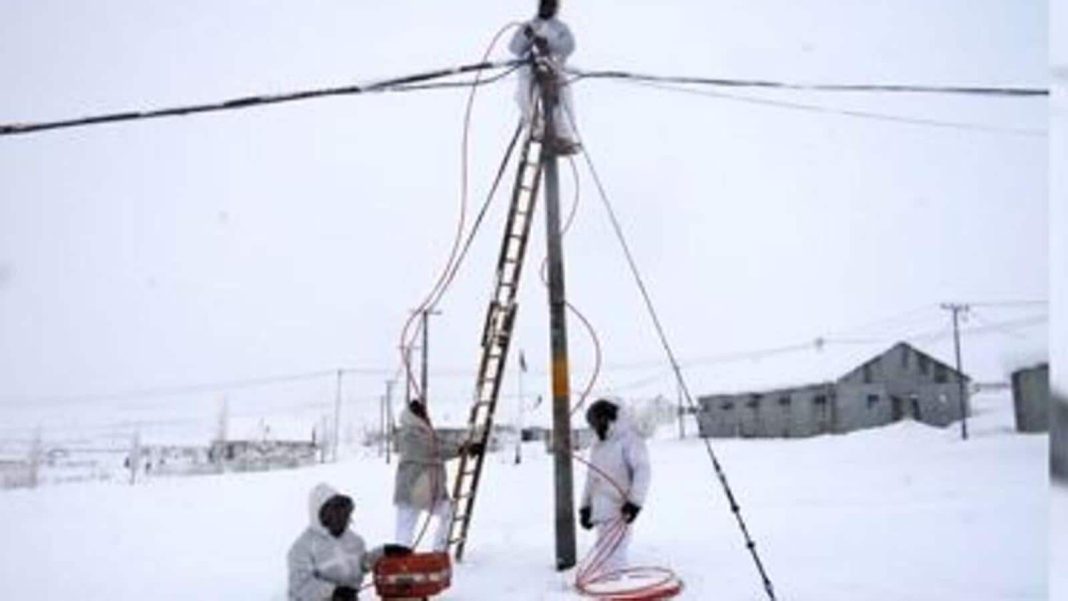The Indian Army has successfully established optical fibre connectivity at two of its most remote outposts in the Ladakh sector, notably at Siachen and Daulet Beg Oldie, marking a significant enhancement in communication capabilities in one of the world’s most challenging environments. This initiative, announced by the army’s 14 Corps, aims to provide high-speed broadband connectivity, demonstrating the army’s commitment to maintaining operational efficiency even in extreme conditions.
In a detailed update shared on social media platform X, the 14 Corps highlighted the exceptional efforts of the army’s signallers who undertook this arduous task amid the unforgiving terrain and severe weather conditions. “Reaching Out To The Farthest & The Highest Battlefield: Amidst the icy heights of #Siachen and #DBO the firefurycorps #Signallers braved the toughest weather conditions to ensure optical fibre connectivity at heights above 18,000 feet,” the army stated.
This development is particularly groundbreaking as it marks the first time optical fibre cables have been laid across such treacherous landscapes. The operation involved navigating crevasses and enduring bone-chilling winds, showcasing the determination and resilience of the personnel involved. The army emphasized that their “perseverance and unyielding spirit prevailed over every challenge” faced during this operation.
Siachen has been a focal point of attention in recent months, especially following the historic visit of President Droupadi Murmu in September. She became not only the first Indian woman president but also the third individual overall to visit the Siachen base camp. During her visit, President Murmu praised the courage, commitment, and dedication of the soldiers stationed at the world’s coldest and highest battlefield. Her visit coincided with the 40th anniversary of Operation Meghdoot, an operation launched by the Indian Army on April 13, 1984, to reclaim territorial control over the Siachen glacier from occupying Pakistani forces.
Given the strategic importance of the region, where approximately 80% of posts are situated at altitudes exceeding 16,000 feet, the recent advancements in connectivity are expected to bolster operational readiness. The iconic Bana post, perched at an elevation of 21,753 feet, stands as a testament to the extreme conditions faced by troops in this sector.
In a related development, India is also advancing the construction of an alternative road to the crucial Daulet Beg Oldie outpost near the disputed Line of Actual Control (LAC). This new road is designed to facilitate the movement of soldiers, weaponry, and logistical support, enhancing the army’s capability to reinforce front-line positions. Unlike the existing route from Darbuk, which is visible from across the LAC, this new route is strategically advantageous, ensuring greater operational security.
Overall, these initiatives reflect the Indian Army’s continuous efforts to adapt to the challenges posed by critical geographic and climatic conditions, while simultaneously ensuring that its personnel are adequately supported through improved communication and logistics.





